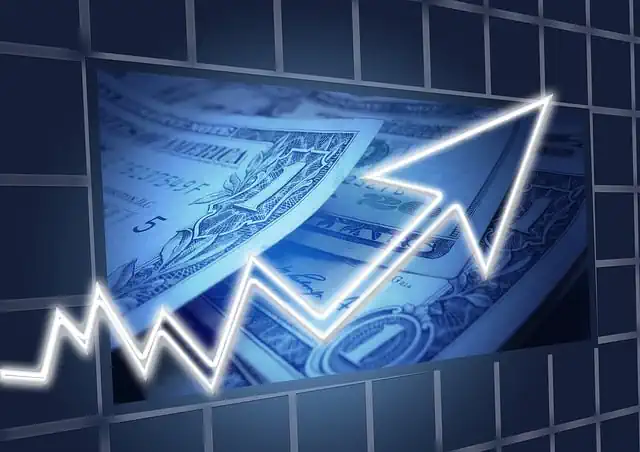How To Make Money Selling Ai Art
“Unlock the potential of AI art and turn creativity into profit.”
Introduction
Introduction: Making money by selling AI art is a new and exciting opportunity for artists and entrepreneurs alike. With the rise of artificial intelligence, the art world is experiencing a revolution, and there are many ways to capitalize on this trend. In this article, we will explore some of the best ways to make money selling AI art, including creating your own AI-generated art, selling AI art on online marketplaces, and collaborating with AI artists.
Maximizing Profits: Tips for Pricing Your AI Artwork
Are you an artist looking to make some extra cash? Have you considered selling AI-generated artwork? With the rise of artificial intelligence, the art world has seen a surge in the creation and sale of AI-generated art. But how do you price your AI artwork to maximize profits? Here are some tips to help you get started.
First, consider the uniqueness of your artwork. AI-generated art can be replicated easily, so it’s important to make sure your piece stands out. If your artwork is one-of-a-kind or has a unique style, you can price it higher than a piece that can be easily replicated. Additionally, if your AI artwork is part of a limited edition series, you can price it higher than a piece that is mass-produced.
Next, consider the complexity of your artwork. The more complex the artwork, the more time and effort it took to create. This can be reflected in the price. However, it’s important to keep in mind that just because a piece took longer to create doesn’t necessarily mean it’s more valuable. The quality of the artwork is also important.
Another factor to consider is the size of your artwork. Larger pieces generally sell for more than smaller pieces. This is because larger pieces require more materials and take up more space. However, it’s important to keep in mind that larger pieces may also be more difficult to sell due to their size.
The medium you use to create your AI artwork can also affect the price. For example, if you create your artwork using a 3D printer, the cost of materials and equipment can be reflected in the price. Additionally, if you use a high-quality printer or paper, this can also increase the value of your artwork.
When pricing your AI artwork, it’s important to do your research. Look at what other artists are selling their AI artwork for and compare it to the quality and uniqueness of your own artwork. You can also consider the demand for AI artwork in your area or online. If there is a high demand for AI artwork, you may be able to price your artwork higher.
Finally, consider the cost of selling your artwork. If you’re selling your artwork online, you may need to factor in shipping costs and fees from the platform you’re using to sell your artwork. Additionally, if you’re selling your artwork in a gallery, you may need to factor in commission fees.
In conclusion, pricing your AI artwork can be a tricky task. It’s important to consider the uniqueness, complexity, size, medium, and demand for your artwork when setting a price. Additionally, doing your research and factoring in the cost of selling your artwork can help you maximize your profits. With these tips in mind, you’ll be on your way to making money selling AI art.
Building Your Brand: Marketing Strategies for Selling AI Art

Are you an artist looking to make some extra cash? Have you considered selling AI art? With the rise of artificial intelligence, the art world has seen a surge in AI-generated artwork. And with the right marketing strategies, you can turn your AI art into a profitable business.
First and foremost, it’s important to build your brand. This means creating a unique identity for your AI art and establishing yourself as a reputable artist. Start by creating a website or social media page dedicated to your AI art. Use high-quality images and descriptions to showcase your work and make it easy for potential buyers to browse and purchase your pieces.
Next, consider partnering with galleries or online marketplaces that specialize in AI art. This can help you reach a wider audience and gain exposure in the art world. Look for galleries or marketplaces that align with your artistic style and values, and be sure to read their terms and conditions carefully before signing on.
Another effective marketing strategy is to collaborate with other artists or brands. This can help you reach new audiences and build relationships within the art community. Consider partnering with other AI artists to create a joint exhibition or collaborating with a brand to create AI-generated designs for their products.
Social media can also be a powerful tool for marketing your AI art. Use platforms like Instagram and Twitter to share your work, connect with other artists and potential buyers, and build a following. Be sure to use relevant hashtags and engage with your followers to keep them interested and invested in your art.
When it comes to pricing your AI art, it’s important to consider factors like the complexity of the piece, the materials used, and the time and effort put into creating it. Research the prices of similar pieces in the market and adjust your prices accordingly. Don’t be afraid to experiment with different pricing strategies, such as offering limited edition prints or creating a tiered pricing system based on the size or complexity of the piece.
Finally, don’t forget the importance of networking and building relationships within the art community. Attend art events and exhibitions, join online forums and groups, and connect with other artists and industry professionals. Building a strong network can help you gain valuable insights and opportunities, and can also lead to collaborations and partnerships down the line.
In conclusion, selling AI art can be a lucrative and rewarding business with the right marketing strategies in place. By building your brand, partnering with galleries and marketplaces, collaborating with other artists and brands, using social media effectively, pricing your art appropriately, and networking within the art community, you can turn your AI art into a successful and sustainable business. So why not give it a try and see where your creativity takes you?
Creating Unique Pieces: Techniques for Generating AI Artwork
Artificial intelligence (AI) has revolutionized the way we create art. With the help of AI, artists can now generate unique and stunning pieces of artwork that were once impossible to create. AI art is a new and exciting field that is gaining popularity among artists and collectors alike. If you’re interested in making money selling AI art, here are some techniques for generating AI artwork that will help you create unique pieces that will attract buyers.
1. Style Transfer
Style transfer is a technique that involves taking the style of one image and applying it to another. This technique is used to create unique and visually stunning pieces of art. To use this technique, you’ll need to have two images: one that you want to apply the style to and another that you want to use as the style reference. There are many AI tools available that can help you with this technique, such as DeepArt.io and Prisma.
2. Generative Adversarial Networks (GANs)
Generative Adversarial Networks (GANs) are a type of AI algorithm that can generate new images based on a set of input data. GANs work by having two neural networks compete against each other: one network generates images, and the other network tries to distinguish between real and fake images. This competition results in the creation of new and unique images that can be used for AI art. There are many GANs available that can help you with this technique, such as DALL-E and ArtBreeder.
3. Neural Style Transfer
Neural Style Transfer is a technique that combines the power of deep learning with the creativity of art. This technique involves using a pre-trained neural network to transfer the style of one image onto another. The result is a unique and visually stunning piece of art that combines the style of one image with the content of another. There are many AI tools available that can help you with this technique, such as NeuralStyle.art and DeepDreamGenerator.
4. Data Art
Data art is a type of AI art that involves using data to create visual representations. This technique involves using data sets to create unique and visually stunning pieces of art. There are many AI tools available that can help you with this technique, such as DataArt.ai and DataCanvas.
5. Evolutionary Art
Evolutionary art is a type of AI art that involves using genetic algorithms to create new and unique images. This technique involves creating a population of images and then using genetic algorithms to evolve the population over time. The result is a unique and visually stunning piece of art that has been created through a process of evolution. There are many AI tools available that can help you with this technique, such as Picbreeder and EvoLisa.
In conclusion, AI art is a new and exciting field that is gaining popularity among artists and collectors alike. If you’re interested in making money selling AI art, there are many techniques for generating AI artwork that will help you create unique pieces that will attract buyers. Whether you’re using style transfer, GANs, neural style transfer, data art, or evolutionary art, there are many AI tools available that can help you create stunning pieces of art that will stand out in the market. So, get creative and start exploring the world of AI art today!
Navigating Copyright Laws: Protecting Your AI Artwork
Artificial intelligence (AI) has revolutionized the way we create and consume art. With AI-generated art becoming increasingly popular, many artists are exploring the potential of this technology to create unique and innovative pieces. However, as with any form of art, it is important to navigate the legal landscape to protect your creations and ensure that you can profit from your work. In this article, we will explore how to navigate copyright laws to protect your AI artwork and make money selling it.
Firstly, it is important to understand the basics of copyright law. Copyright is a legal right that grants the creator of an original work exclusive rights to its use and distribution. This means that if you create an AI-generated artwork, you automatically own the copyright to that piece. However, it is important to note that copyright law can be complex, and there are certain nuances to consider when it comes to AI-generated art.
One of the key issues with AI-generated art is the question of authorship. In traditional art, the artist is the clear author of the work. However, with AI-generated art, the lines can become blurred. This is because the AI system is responsible for creating the artwork, rather than a human artist. As such, it is important to ensure that you have a clear understanding of who owns the copyright to your AI-generated artwork.
One way to navigate this issue is to ensure that you have a clear agreement in place with the AI system that you are using. This agreement should outline who owns the copyright to the artwork, and any other relevant terms and conditions. It is also important to ensure that you have a clear understanding of the terms of service of any AI system that you are using, as these may impact your ownership of the artwork.
Another important consideration when it comes to copyright law and AI-generated art is the question of fair use. Fair use is a legal doctrine that allows for the use of copyrighted material without permission in certain circumstances, such as for criticism, commentary, news reporting, teaching, scholarship, or research. However, the application of fair use to AI-generated art is still a relatively new area of law, and there is currently no clear guidance on how it should be applied.
To navigate this issue, it is important to ensure that you are familiar with the principles of fair use, and to seek legal advice if you are unsure about whether your use of AI-generated art falls within the scope of fair use. It is also important to ensure that you are not infringing on the copyright of others when creating your AI-generated art, as this can lead to legal issues down the line.
Finally, it is important to consider how you can make money selling your AI-generated art. There are a number of different avenues that you can explore, including selling your artwork through online marketplaces, licensing your artwork to third parties, or even creating your own online store to sell your creations. It is important to ensure that you have a clear understanding of the terms and conditions of any platform that you are using to sell your artwork, and to ensure that you are not infringing on the copyright of others when creating and selling your AI-generated art.
In conclusion, AI-generated art is an exciting and innovative field, but it is important to navigate the legal landscape to protect your creations and ensure that you can profit from your work. By understanding the basics of copyright law, navigating the question of authorship, considering fair use, and exploring different avenues for selling your artwork, you can make money selling your AI-generated art while staying on the right side of the law.
Collaborating with AI: Exploring the Intersection of Art and Technology
Artificial intelligence (AI) has been making waves in the art world, with AI-generated art pieces selling for millions of dollars. If you’re an artist looking to make some extra cash, selling AI art could be a lucrative option. Here’s how to get started.
First, you’ll need to familiarize yourself with AI art tools. There are several software programs available that allow you to create AI-generated art, such as DeepDream, ArtBreeder, and RunwayML. These programs use algorithms to generate unique images based on your input, such as a specific style or color palette.
Once you’ve chosen a tool to work with, it’s time to start creating. Experiment with different inputs and settings to see what kind of art you can generate. Don’t be afraid to try new things and push the boundaries of what’s possible with AI art.
Once you’ve created some pieces you’re happy with, it’s time to start selling. There are several online marketplaces that specialize in AI art, such as Art AI Gallery and AI Art House. These platforms allow you to upload your art and sell it to buyers around the world.
When pricing your art, consider factors such as the time and effort you put into creating it, as well as the uniqueness and quality of the piece. Don’t be afraid to start with lower prices and gradually increase them as you gain more experience and recognition in the AI art world.
Another way to make money selling AI art is through commissions. Many businesses and individuals are looking for unique and eye-catching art pieces to decorate their spaces, and AI-generated art can offer a fresh and innovative option. Reach out to potential clients and offer your services, showcasing your portfolio and highlighting the benefits of AI art.
Collaborating with other artists and technologists can also be a great way to expand your skills and reach new audiences. Attend AI art events and conferences, join online communities and forums, and network with other artists and professionals in the field.
Finally, don’t forget to promote your art through social media and other marketing channels. Share your work on Instagram, Twitter, and other platforms, and use hashtags and keywords to reach a wider audience. Consider creating a website or blog to showcase your art and share your journey as an AI artist.
In conclusion, making money selling AI art requires a combination of creativity, technical skills, and business savvy. By familiarizing yourself with AI art tools, experimenting with different inputs and settings, and leveraging online marketplaces and commissions, you can turn your passion for art and technology into a profitable venture. So why not give it a try and see where your AI art journey takes you?
Conclusion
Conclusion: Making money selling AI art requires a combination of technical skills, creativity, and marketing strategies. It is important to have a strong understanding of AI technology and its potential applications in the art world. Additionally, artists should focus on creating unique and visually appealing pieces that stand out in the market. Effective marketing strategies, such as social media promotion and collaborations with galleries or online marketplaces, can also help artists reach a wider audience and increase sales. With the growing interest in AI art, there is a significant opportunity for artists to monetize their skills and creativity in this emerging field.





